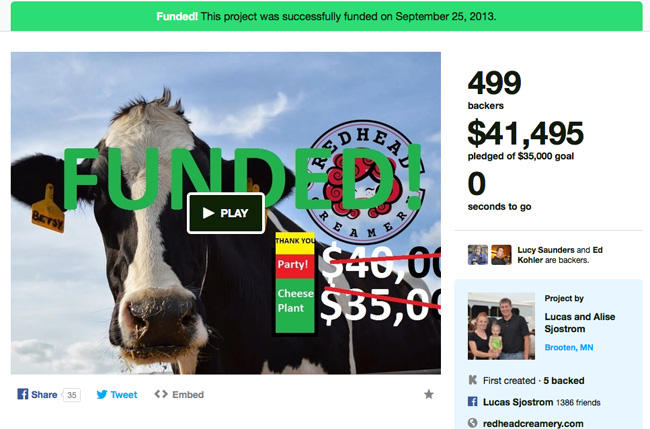
Every week or two, a new Minnesota food, drink, or restaurant campaign is launched on Kickstarter. We’ve covered many of them on the Heavy Table, and most succeed, some spectacularly so (see: Travail). In a sense, all campaigns are the same: organizers set a dollar goal, offer rewards for different levels of financial support (i.e. back us for $25 and get a collectible T-shirt), and strive over the course of the campaign (typically 30 days) to raise financial support through social media, traditional media, personal connections, and any other legal means available.
Unlike many other crowd-funding sites, Kickstarter operates on a win-or-die basis. If you don’t meet your goal, you raise none of the money pledged, which motivates organizers and backers alike and can lead to sometimes tragi-comic levels of veiled desperation as the clock ticks down on a doomed campaign. Done right, a campaign can launch a successful business or renovate a flagging one; done incorrectly, it can strangle a good idea in the cradle or fatally freeze a project’s momentum. All in all, it’s fun to watch, and a bit terrifying to run.
Most press focuses on the launch of new campaigns. But as inspiring as it can be to look forward to a campaign’s successful completion, it can also be useful to look back on an idea that’s hit its goal and figure out what went right, what went wrong, and whether the money was worth the price paid in time, anxiety, and material rewards for backers.
“I think it’s a fantastic tool,” says Alicia Hinze (below, second from right), one of the co-founders of The Buttered Tin in St. Paul. “Not everybody can expect what happened with Travail, but as long as you use it as a tool, it’s going to help you a little bit. It’s not going to make your business, it’s not going to pay for everything you need with your business, but it is a great tool for starting businesses.”
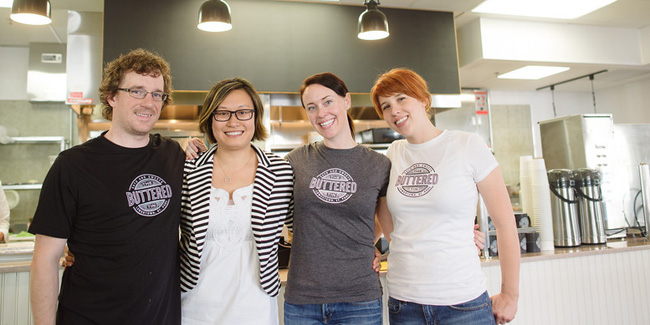
The Heavy Table’s Kickstarter campaign for The Secret Atlas of North Coast Food aimed for $16,000 and raised nearly $22,000; that experience underlies this story, as do memories of the visceral fun and serious agony of the process.
But we wanted to broaden our reach, so we interviewed other metro-area food Kickstarter veterans about their experiences: The Buttered Tin (goal: $10K; raised: $10.8K), Redhead Creamery (goal: $35K; raised: $41.5K), and Birchwood Cafe (goal: $100K; raised: $112K).
1. KICKSTARTER MONEY ISN’T FREE
From the outside — and the potato salad guy’s campaign only adds to the perception — Kickstarter looks like a magical plastic bucket that one need only wave with a bit of panache for it to fill to the brim with high denomination currency.
The truth is, any funds brought in through Kickstarter are earned by a combination of sweat, creativity, smart and/or tenacious marketing, promised rewards, standing connections, and existing reservoirs of goodwill. The money is only free if time and stress have no value, and many (if not most) smart, medium-to-large campaigns end up spending some money on extras such as professional video production, paid media marketing and/or social media boosts.
Alise and Lucas Sjostrom of Redhead Creamery crafted their whole campaign (including video) only to scrap it and rebuild. “We went to the American Cheese Society conference last year and they had a whole workshop on Kickstarter for cheese companies,” recalls Alise. “We completely started [our campaign] over and made it much simpler.”
The first video extensively detailed the history of their farm and went into a great deal of specifics about equipment and process. “After we went to the workshop we focused on: ‘We want to make cheese, this is why, and this is what we’re going to do for you.'”
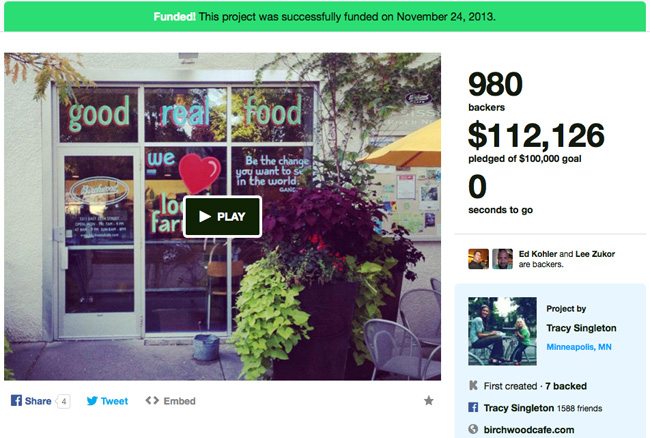
The fulfillment end of things is also no picnic. Usage tax applies to backer rewards. Packaging can be surprisingly expensive and can outstrip postage costs, which are themselves easy to miscalculate. And coordinating communications with backers can be a bear. Birchwood communications director Nichole Goodwell says of her restaurant’s 980 backers, “I’m individually talking to each person about what they’re supposed to get, and when, or why their payment didn’t go through…”
Packaging and delivering individual rewards gets a bit fiddly as well. “Now we’re like, ‘what are we going to put the popcorn in, and how are we going to give people a stick of butter to go with their DVD for their movie experience.'”
And it’s not all postage calculations and doughnut-mix packaging. There’s also an emotional cost to the campaign, says Birchwood owner Tracy Singleton: “I didn’t realize how personally I would take it. When we started we got a big push, but then it kind of just went like this…” (Here she gestures a flat line.) “Getting out of bed was hard — I felt like I was a seventh grader again, worrying if people liked me. I was a wreck.”
2. KICKSTARTER’S PR AND MARKETING VALUE IS SUBSTANTIAL
A common thread in all our interviews was that earning money through Kickstarter took a surprising amount of work. But the other side of that coin was the surprising amount of exposure and goodwill the organizers experienced.
A successful Kickstarter campaign connects a project with its supporters, old and new, and affirms the value of that connection.
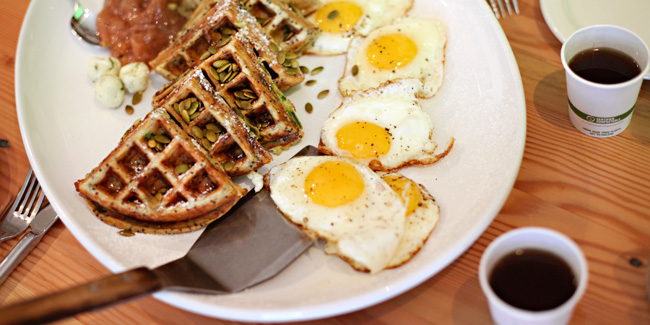
“I cannot put a price on the [marketing] value we got,” says Singleton. “Yeah, we got $112,000 out of it, but we also got so much PR and national exposure and public outpouring of love for Birchwood, which we kind of knew was out there, but not to that degree.”
An easy-to-overlook benefit of the campaign is that everyone who even considers backing your project watches your video reel, which if correctly produced, is a beautiful sound-bite summary of your mission and business. Sjostrom talks about attending the Minnesota Cheese Festival after her campaign: “There were all of these people who knew about us through Kickstarter, and that was just amazing. I don’t know who they are, and they see us and know exactly who we are and what our story is.”
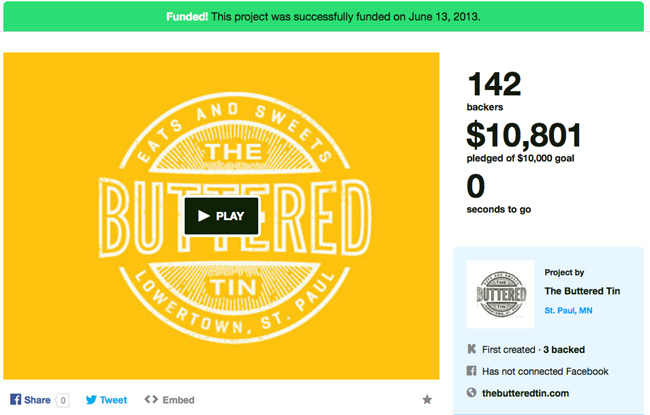
Buttered Tin co-owner Hinze explains the importance of a solid introduction when your bread and butter is literally bread and butter: “[Kickstarter] is a way to say, ‘Hey we’re here; we’d like to be part of the neighborhood.’ One thing we hoped for that came to pass is that people in the neighborhood and St. Paul who donated to us also patronized us, because they were invested in the company.”
3. KNOW YOUR PRE-KICKSTARTER POOL OF SUPPORT
If you build it, they may or may not come. If you’re essentially pre-selling a new electronic gadget, the gadget may sell itself to tens or hundreds of thousands of strangers. But cheese, or beer, or a restaurant will be more difficult to sell on novelty alone, particularly if you’re limited in your geographic reach. Before setting your campaign’s dollar amount, you need to ponder your audience — friends, family, readers, investors, philosophical fellow-travelers, fellow cheese enthusiasts, and so forth.
For Buttered Tin, a new venture without any kind of real public profile, a (reasonably) modest goal of $10,000 felt like the right fit. “No one had heard of the Buttered Tin yet,” says co-owner Hinze. “We weren’t open; we were just a concept at that time. We had just started construction. I think that was a really good goal, and we made just over that. I feel if I’d we’d shot higher than that, we probably would have had a difficult time.”
But for Birchwood, a neighborhood business with roots that go back to 1995 and strong connections with movements including local farming, sustainable food, and ethical eating, there was a big reservoir to draw from.
Of the Birchwood campaign’s eventual success, Singleton says: “It’s both validating and illuminating about the community that’s been there all along. We’re always talking about paying attention to where our food comes from, and the community is doing that by getting involved in this… and so it all comes full circle.”
4. GIVE A FAIR EXCHANGE
Storytelling and ideals get backers thinking about making the plunge. A good reward with a reasonable value seals the deal. Intangible ephemera such as postcards and hugs can bulk out bigger packages or anchor the $10 and under rewards, but when you drift into the $20-$50 heartland of Kickstarter pledges, something with a bit of substance helps seal the deal.
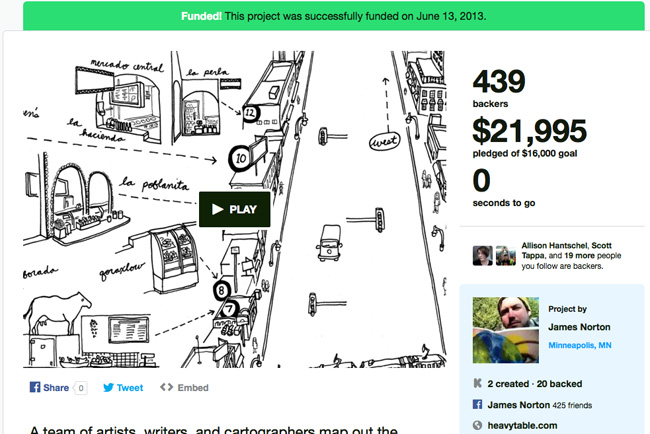
Whether that might be something like mini-CSAs or mugs (Birchwood, Buttered Tin), books (The Heavy Table), or cheese (Redhead Creamery), providing core backers with a gift of a retail value comparable to their support gives your experiential and more wildly ambitious pledge levels a solid grounding. Rewards that promise novel experiences are a good fit at higher levels. Big dinners in special places with special cultural twists seem to be perennial favorites in the food community, not surprisingly. And top-level rewards that offer some extremely limited honor can go over well, presuming the market values having a pizza named after it as much as you think it might.
5. KICKSTARTER BACKERS CAN BOND FOR LIFE
Done correctly, with meaningful rewards delivered promptly to backers excited about a campaign’s success, Kickstarter can turn onlookers into friends, and friends into committed supporters.
“People we didn’t even know before we started are our friends, and we see them all the time as they come in for their morning coffee and banana bread,” says Hinze of the Buttered Tin’s Kickstarter customers.
A Kickstarter campaign can be an opportunity to reach out to people in unique ways and cement a bond. One of the most popular Birchwood backer levels offered Thanksgiving dinner personally delivered by the cafe’s chef:
“That was the pinnacle of Birchwood food at home,” recalls Goodwell. “[Chef] Marshall [Paulsen] got in his van and drove around to 30-some houses and delivered Thanksgiving dinner.”
“I tried to get him to dress up as a turkey or a Pilgrim or something but he wasn’t having any of it…” says Singleton.
“He was so excited to go up to the door of someone you know is a supporter of our restaurant and say, ‘Here’s your Thanksgiving dinner!'” adds Goodwell. “It’s like the Publisher’s Clearing House guy showing up.” And as comic as the whole idea might seem on some level, its success may result in its sticking around, independent of the Kickstarter campaign that began it. “We’ve talked about doing Thanksgiving delivery again,” says Singleton.

So cool to read this article! Thank you for writing this James. Very relevant to us right now. We just launched our own Minnesota Food Kickstarter yesterday for Yumzar.com > https://www.kickstarter.com/projects/2013311880/bring-the-mn-farmers-market-to-the-digital-age-wit
Will have to apply some of these tips!